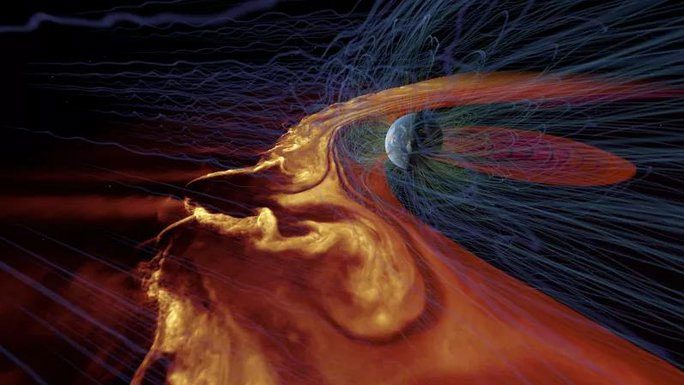For the first time, American scientists have found clear signals of one of the key factors supporting the existence of life on a planet that closely resembles Earth.
According to Live Science, this discovery comes from recent observations made by the Very Large Array (VLA), a radio telescope located in New Mexico, in the southwestern United States, as it focused on the YZ Ceti star, which is only 12 light-years away from Earth.
Scientists from the National Radio Astronomy Observatory (NRAO) have not only confirmed the existence of a planet orbiting this star, named YZ Ceti b, but have also established that it is a rocky planet similar to Earth.

A magnetosphere strong enough for Earth-based telescopes to detect signals potentially existing sustainably on a planet 12 light-years away – (Photo: NRAO/UNIVERSITY OF ILLINOIS AT URBANA-CHAMPAIGN).
Although the likelihood of life existing on YZ Ceti b is low due to its proximity to the star and potential high temperatures, scientists have found something even more intriguing: some radio signals indicating the presence of a magnetic field.
A magnetic field surrounding a planet forms a protective layer known as a magnetosphere, which is one of the leading factors that can ensure the survival of organisms. Earth is an example of a planet with a strong magnetosphere, which protects us from the harmful effects of cosmic rays.
Many other factors contributing to a habitable planet also have the potential for sustainable preservation. For instance, without a magnetosphere or if this magnetosphere were too weak, our atmosphere could be rapidly eroded, even leading to the loss of water into space, similar to what happened on Mars in the past.
Whether or not YZ Ceti b can support life, this discovery marks a significant breakthrough in the quest to prove that we are not alone in the universe.
“This research not only indicates that this special rocky planet may have a magnetic field but also provides a promising method for further exploration,” said NRAO Director Joe Pesce, a member of the research team.
To start off easily, scientists chose YZ Ceti b because it is close to its host star and can be clearly observed. However, with this effective signal screening method, they will have a stepping stone to advance to planets that possess more life-sustaining factors. Such planets have been discovered in significant numbers and are still awaiting further investigation.
With YZ Ceti b, its magnetosphere also helps scientists further study its host star, thereby exploring what is known as “space weather beyond the Solar System.”
The study has just been published in the scientific journal Nature Astronomy.


















































